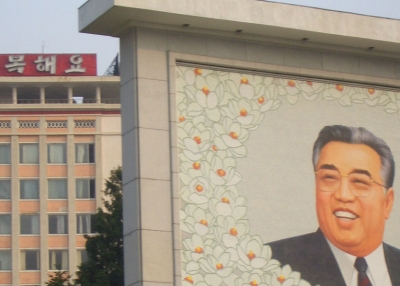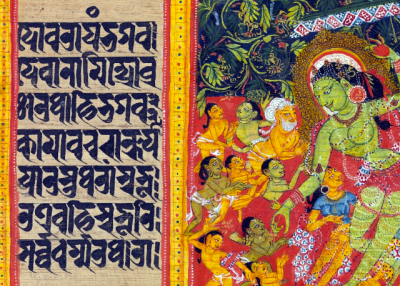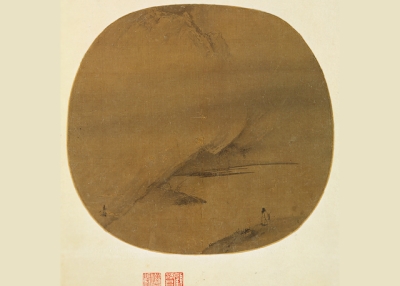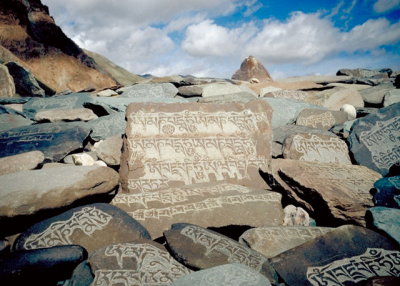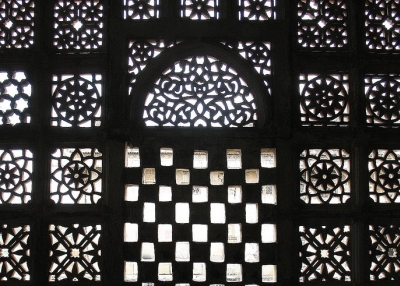Dari

Along with Pashto, Dari is one of the two official languages of Afghanistan. A member of the Northwestern Iranian language subfamily, Dari is closely related to languages such as Kurdish, Baluchi, and Gilaki. Dari is the Afghan dialect of Persian and as such is sometimes referred to as “Eastern Persian”. Dari, rather than Pashto, serves as the lingua franca for the languages of Afghanistan. Roughly one-third of the population of Afghanistan (approximately five million) speak the language. Dari is also spoken by a total of two and a half million people in Iran, Pakistan, and neighboring regions. Iranian Dari, however, is considered to be endangered. (Source: http://www.lmp.ucla.edu/Profile.aspx?LangID=191&menu=004)
Dari has been listed as a critical language by the American State Department since 9/11/2001 because of our strategic business and security interests in the Middle Eastern and South Asian world. We are currently engaged in a war in Afghanistan where Dari is one of two national languages.
In 2007 the United States exported $495 million to Afghanistan. This amount has increased from 0 because America had no official relationship with Afghanistan in 1985, which was occupied by the USSR. Yet this is 12,926 percent since 1992. In 2007 the United States has imported $74 million in goods from Afghanistan, an increase of 3,423 percent since 1992.
Dari is not detailed as a language spoken by significant enough American citizens to have any documentation in the 2000 U.S. Census. In 2006, 104 higher education students were studying Arabic and no measurable amount of students studying it in grades K-12.
Linguistic affiliation
Dari is a Northwestern Iranian language of the Indo-Iranian subgroup of the Indo-European language family.
Language variation
Although phonological and lexical differences persist among the various dialects, they cause little difficulty in comprehension. These differences exist on a relatively small scale. This is valid even as regards the dialects spoken in Iran and Afghanistan. Most Afghani Dari dialects are more similar to literary Persian than the Iranian dialects. Zargari (Morghuli) is a secret language of artisans based on Persian.
There are different dialects of Dari spoken in Afghanistan. People living close to the Iranian border speak in Persian, while those living in northern Afghanistan speak the Shamaly dialect. The principal dialects spoken in Afghanistan are Herati Dari, Tajiki Dari, Kabuli Dari, Khorasani Dari, and Parsiwan. In Iran, the key dialects are Yazd Dari and Kerman Dari.
Role in society
Dari plays an important role in Afghan society. It is one of the national languages of the country and is used by roughly 50% of the population. In addition, it represents the primary means of communication between speakers of different languages in Afghanistan. Dari is currently taught in Afghani schools, heard on national radio, and has enjoyed a long and prestigious literary tradition. The current status of Dari in countries where it does not enjoy national status, on the other hand, is less stable. In Iran, for instance, Dari is neither written nor taught in schools and is considered an endangered language. Iranians are gradually giving up Dari to speak/learn Persian, the official language of Iran. The variety of Dari spoken in Pakistan, however, although marginalized, is a relatively stable institution.
History
Dari emerged as the language of the Persians and Zorastrian priests after the defeat of the Parthians by Cyrus in the middle of the sixth century B.C. Shortly thereafter, Dari was adopted as the spoken language of the Persian courts of the Sassanids. Following the Muslim conquest in the sixth century A.D., Arabic replaced Dari as the official language of the Persians. This lasted roughly two hundred years. During this period, Dari was not forgotten and little by little came to take on a new form, influenced considerably by Arabic and Parthian. Scholars consider this linguistic amalgamation to be the mother of both Dari and Persian. (Source: Language Materials Project http://www.lmp.ucla.edu/Profile.aspx?LangID=191&menu=004)
Number of speakers worldwide: 7.6 million
Number of speakers in the United States: Dari is not detailed as a language spoken by significant enough American citizens to have any documentation in the 2000 U.S. Census. (http://www.census.gov/population/www/cen2000/phc-t20.html)
Number of language learners in the United States
Modern Language Association data show that college and university enrollments in Dari have increased by 159% between 2002 and 2006, from 41 to 104. (Source: Enrollments in Languages Other Than English in United States Institutions of Higher Education, Fall 2006 by Nelly Furman, David Goldberg, and Natalia Lusin http://www.mla.org/2006_flenrollmentsurvey)
FLAS Allotments for 2007:
There are 17 National Resource Centers and 17 FLAS INSTITUTIONS that have received FLAS funding for Middle Eastern languages in 2007. 182 FLAS Fellowships have been allotted for Middle Eastern languages at these institutions totaling a budget of $4,015,000. Dari is a, localized and uncommon language of the Middle East and is not taught at any of these institutions under the FLAS grant. (Source: http://www.ed.gov/programs/iegpsflasf/awards.html)
According to a survey conducted by the American Council on Teaching Foreign Languages entitled, Foreign Studies Enrollment in Public Secondary Schools, Dari does not have an enough language learners to be featured as an individual category but rather it is a part of the Less Commonly Taught languages category that they have titled “Other.” According to this category, 66,623 7-12 students are studying languages other than French, German, Italian, Japanese, Russian, Spanish, SNS, African Languages, ASL, Arabic, Czech, Chinese, Cantonese, Greek, Haitian, Hebrew, Korean, Native American, Polish, Portuguese, or Vietnamese. This indicates that 1% of all 7-12 language students studied a language other than those listed in detail here. 71,948 K-6 students study a language other than French, German, Italian, Japanese, Latin, Russian or Spanish. Report available at: http://www.nvtc.gov/lotw/months/november/USschoollanguages.htm
According to the website of Less Commonly Taught Languages, no U.S. primary and secondary schools teach Dari: http://db.carla.umn.edu/lctl/FMPro
America’s business relationship with Afghanistan:
Dari is one of the two official languages of Afghanistan.
In 2007 the United States exported $495 million to Afghanistan. This amount has increased from 0 because America had no official relationship with Afghanistan in 1985, which was then occupied by the USSR. Yet this is 12,926% since 1992. In 2007 the United States has imported $74 million in goods from Afghanistan, an increase of 3423% since 1992.
To provide comparison, America’s exports for this same period to the five nations with English as their national language was $356,436 million, which has increased by 513% since 1985. In 2007 the United States has imported $434,481 million in goods from these countries, an increase of 446%. (Source: http://www.census.gov/foreign-trade/balance/index.html)
National security measure relating to language
In response to the 9/11 terrorist attacks, the National Foreign Language Center (NFLC) convened in January 2002 with the leaders from the intelligence, defense, diplomatic, and education communities to identify the deficiencies in language resources and establish the critical need for language learning to stem the war on terrorism. Increasing language acquisition of critical languages has been one of the main approaches to bolstering security since 2001. The National Security Agency, the Pentagon, State Department and major intelligence units of the US government have cited Dari as a critical language because of the central role both Afghanistan played in geo-politics in the last quarter century. With the United Nations, we have been engaged in a war in Afghanistan since 2001. Our intention is to bring stability to the nation so it will no longer be a region that harbors terrorists and serves as the launching point for aggressive operations against other nations.
The National Security Language Initiative has promoted critical languages since 2002. Since Dari is spoken by a relatively small population and it’s importance to America is mainly security related, there are few resources for teaching it in American education institutions. This is despite the fact that there are funds to support Dari as there are for other critical languages. For this reason, it is a specific priority at the language institutes of the National Security Agency and other American Intelligence Agencies.
Sources:
http://www.nflc.org/policy_and_strategy/language_and_national_security
http://www.nvtc.gov/lotw/months/november/criticalLanguages.html
http://www.state.gov/r/pa/prs/ps/2006/58733.htm
Useful Websites:
http://www.govtilr.org/Web_LCTL/dari.htm
http://www.cal.org/resources/discoverlanguages
http://nclrc.org/teaching_materials/materials_by_language
Connect With Us
Asia Society
725 Park Avenue
New York, NY 10021
t: 212-327-9260
[email protected]



